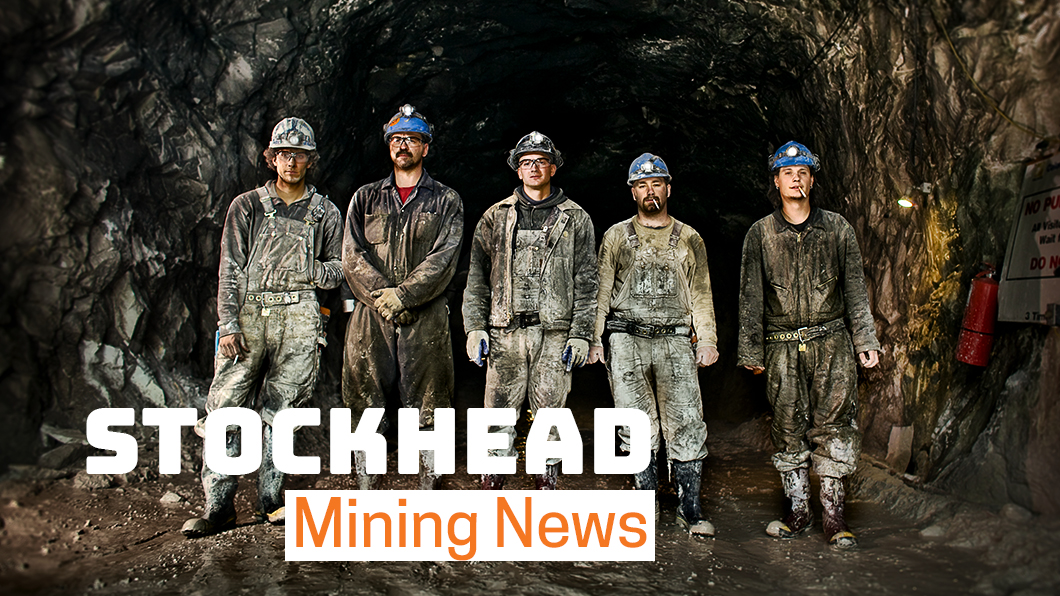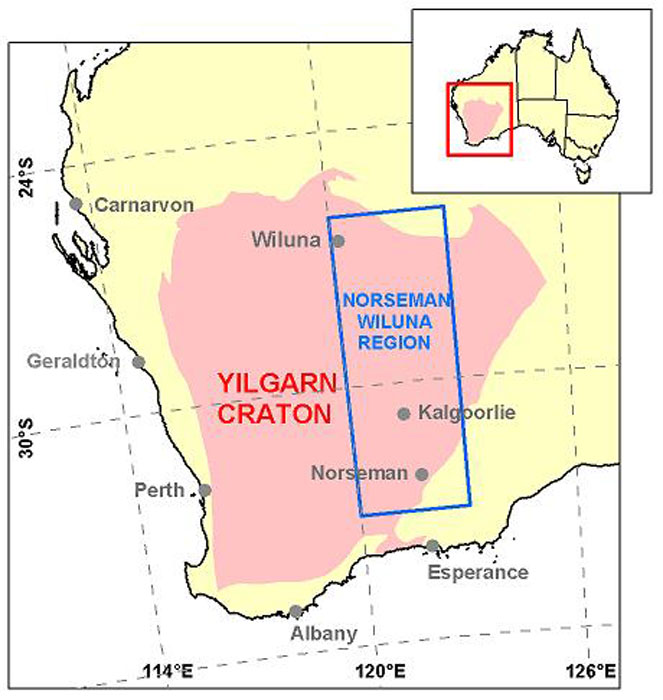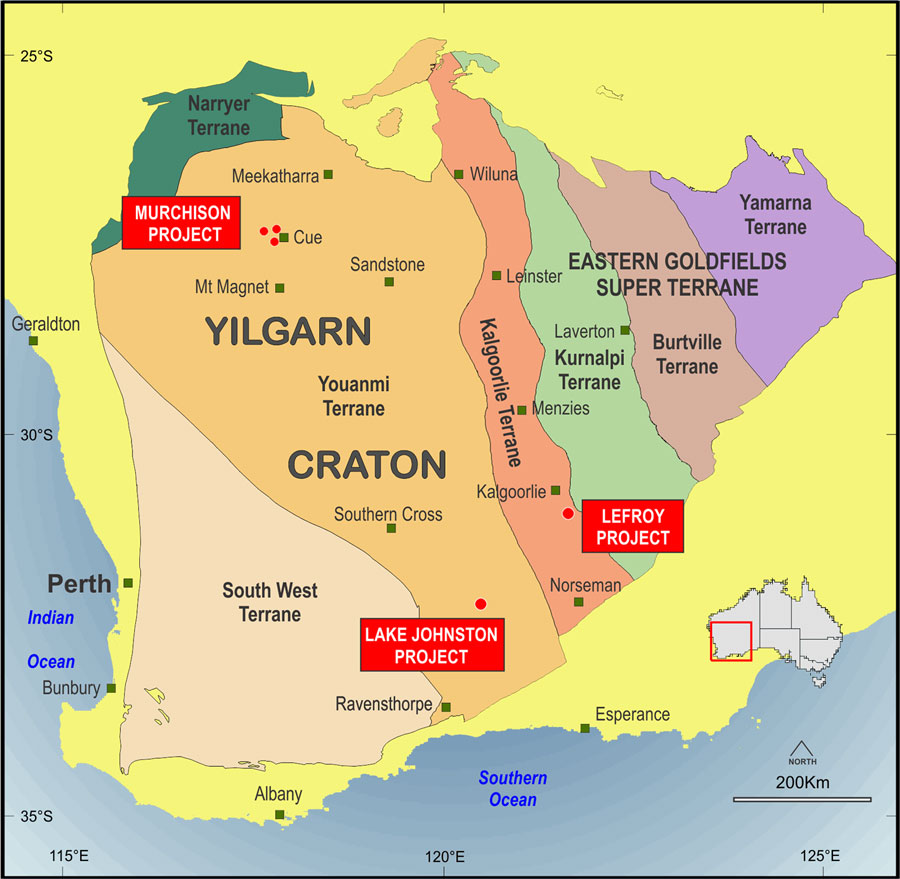Just how much gold is left in the centuries-old Yilgarn?

Pic: Tyler Stableford / Stone via Getty Images
The Yilgarn Craton, a large mineral-rich region around 400km east of Perth in WA, has spawned numerous major mines over the past few centuries and is sometimes described as “Australia’s premier gold and nickel province”. Evidence suggests there’s many more discoveries to come.

The world ‘Yilgarn’ is used by Aboriginal people in the Southern Cross region to describe quartz.
It accounts for the bulk of WA’s land mass and is not just one single prospective area. It actually covers several different “terranes”, which in turn have their own “belts”.
The Yilgarn Craton runs through the Youanmi, Sandstone, Kalgoorlie, Wiluna and Eastern Goldfields regions of WA.
It hosts major mining operations like Northern Star Resources’ and Saracen Mineral Holdings’ (ASX:SAR) newly bought 800,000oz-per-annum Super Pit in Kalgoorlie and Gold Fields’ 250,000oz-per-annum Agnew mine.

The Yilgarn is bordered by the highly gas-prospective Perth Basin and the base metals rich Albany-Fraser Oregon, where Sirius Resources made its takeover worthy Nova-Bollinger discovery.
While it has been the focus of exploration and mining for well over a century, explorers have only really scratched the surface, with evidence to suggest there is still much more gold still to be found at depth.
Researchers from the Minerals Research Institute of Western Australia and CSIRO have used geochemistry to find new ways to unlock more gold deposits in the Yilgarn.
The researchers found that the formation of ancient 2.5-billion-year-old gold deposits produced distinctive chemical signatures in the surrounding rocks.
The science of it all
WA Mines Minister Bill Johnston said looking for these distinctive patterns would make it faster and more efficient for explorers to identify potential new deposits.
“The discovery of these chemical signatures could greatly assist exploration in the eastern Yilgarn which, despite sharing its geology with the Eastern Goldfields, has produced fewer gold discoveries than expected,” he explained.
“This research will help reduce the risk in targeting ore bodies buried beneath the surface, that conventional exploration has failed to identify, and will encourage investment in under-explored areas in our state.”
Guy Le Page, a former geologist and stockbroker for Perth-based financial services provider RM Corporate Finance, told Stockhead that while the Yilgarn had been extensively drilled, a fair whack of it had only been shallow drilling.
“It’s pretty prospective and we are seeing new discoveries at depth,” he said.
Le Page pointed to Spectrum Metals (ASX:SPX), which landed itself an attractive $208m takeover offer from Ramelius Resources (ASX:RMS) earlier this year thanks to its high-grade Penny West gold discovery in the region.
“That’s a good example of a play that’s been around for a long time, drilled at depth and found some high-grade mineralisation,” he said.
Ramelius has a collection of producing gold mines and development projects in the Yilgarn, including the former Evolution Mining (ASX:EVN) owned Edna May mine, located in the Southern Cross province, and the Mt Magnet mine that sits adjacent to the town of the same name.
The larger rival swallowed up Spectrum because it wanted to build out its production capacity with the addition of the advanced Penny West discovery to its portfolio.
Bellevue Gold’s (ASX:BGL) is also having success in the region at its namesake project that sits on the prolific Wiluna-Norseman gold belt.
The Bellevue mine historically produced 800,000 ounces at 15g/t from a lode vein underground operation before its closure in the late 90s, making it one of Australia’s highest-grade gold mines.
But the operation was far from mined out, with Bellevue having so far built the resource up to 2.2 million ounces at 11.3g/t.
“They drilled along strike or parallel to the main Bellevue load and sure enough there’s more mineralisation,” Le Page said.
“So I think there’s a lot more discoveries to come.”
The other Yilgarn hopefuls
The Youanmi and Sandstone regions in particular have long been known for their gold prospectivity and production, but until recently have been largely overlooked compared to the main greenstone belts in Western Australia.
However, recent discoveries like Spectrum’s Penny West and Rox Resources’ (ASX:RXL) discovery of previously unrecognised granite-hosted high-grade gold has brought the Youanmi back to the fore.
Meanwhile, Middle Island Resources’ (ASX:MDI) string of exploration successes and the recommended takeover offer for Alto Metals (ASX:AME) by China’s Goldsea Australia Mining have turned the spotlight on the Sandstone region.
Impact Minerals (ASX:IPT) recently applied for five tenements prospective for nickel, copper and platinum group metals and gold in the southwest Yilgarn Craton.
The company says the project lies within a major 500km long and up to 30km wide deformation belt, or mobile belt, that trends northwest to southeast from the Moora-Julimar-Yarawindah area through Arkun.
While the belt is generally not recognised in many regional geology maps, the company says it is self-evident in the magnetic data and may mark an ancient terrane boundary or proto-craton margin.
These geological provinces are known globally to host major nickel, copper and platinum group elements deposits such as Nova-Bollinger, Mawson, the Thomson fold belt in Canada and the recent Yarawindah and Julimar discoveries.
Lefroy Exploration (ASX:LEX) is searching for big, tier 1 deposits on its own or through joint venture with major gold producer Gold Fields on underexplored ground very close to Kalgoorlie.
Blackham Resources (ASX:BLK), meanwhile, is partway through a turnaround strategy to make its Wiluna mine in the Yilgarn more productive and profitable.
At Stockhead, we tell it like it is. While Rox Resources, Impact Minerals, Lefroy Exploration and Blackham Resources are Stockhead advertisers, they did not sponsor this article.
Related Topics

UNLOCK INSIGHTS
Discover the untold stories of emerging ASX stocks.
Daily news and expert analysis, it's free to subscribe.
By proceeding, you confirm you understand that we handle personal information in accordance with our Privacy Policy.








